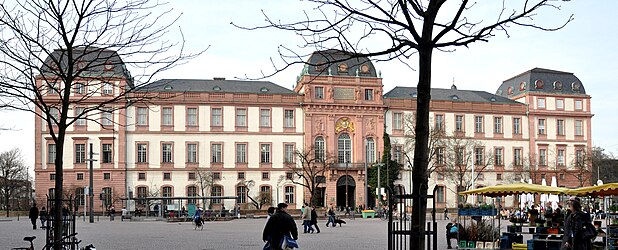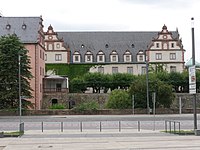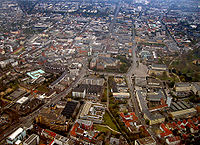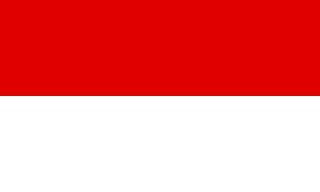
Hesse, officially the State of Hesse, is a state in Germany. Its capital city is Wiesbaden, and the largest urban area is Frankfurt, which is also the country's principal financial centre. Two other major historic cities are Darmstadt and Kassel. With an area of 21,114.73 square kilometers and a population of over six million, it ranks seventh and fifth, respectively, among the sixteen German states. Frankfurt Rhine-Main, Germany's second-largest metropolitan area, is mainly located in Hesse.

Darmstadt is a city in the state of Hesse in Germany, located in the southern part of the Rhine-Main-Area. Darmstadt has around 160,000 inhabitants, making it the fourth largest city in the state of Hesse after Frankfurt am Main, Wiesbaden, and Kassel.

The Technische Universität Darmstadt, commonly known as TU Darmstadt, is a research university in the city of Darmstadt, Germany. It was founded in 1877 and received the right to award doctorates in 1899. In 1882, it was the first university in the world to set up a chair in electrical engineering. In 1883, the university founded the first faculty of electrical engineering and introduced the world's first degree course in electrical engineering. In 2004, it became the first German university to be declared as an autonomous university. TU Darmstadt has assumed a pioneering role in Germany. Computer science, electrical engineering, artificial intelligence, mechatronics, business informatics, political science and many more courses were introduced as scientific disciplines in Germany by Darmstadt faculty.

Griesheim is a town in the Darmstadt-Dieburg district in Hesse, Germany. It's situated west of Darmstadt.
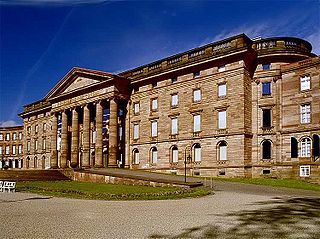
Schloss Wilhelmshöhe is a Neoclassical palace located in Bad Wilhelmshöhe, a part of Kassel, Germany. It was built for Landgrave Wilhelm (William) IX of Hesse in the late 18th century. Emperor Wilhelm II made extensive use of it as a summer residence and personal retreat.
Donatus, Prince and Landgrave of Hesse is a German businessman and the head of the House of Brabant and the House of Hesse.

Eberstadt is the southernmost borough of Darmstadt in Hessen, Germany with a population of 23,728.

Bergpark Wilhelmshöhe is a landscape park in Kassel, Germany. The area of the park is 2.4 square kilometres, making it the largest European hillside park, and second largest park on a hill slope in the world. Construction of the Bergpark, or "mountain park", began in 1689 at the behest of the Landgraves of Hesse-Kassel and took about 150 years. The park is open to the public today. Since 2013, it has been a UNESCO World Heritage Site because of its monumental Baroque architecture and its unique fountains and water features.

The Botanical Garden of TU Darmstadt is a botanical garden maintained by the Technische Universität Darmstadt.

Hessisches Landesmuseum Darmstadt (HLMD) is a large multidisciplinary museum in Darmstadt, Germany. The museum exhibits Rembrandt, Beuys, a primeval horse and a mastodon under the slogan "The whole world under one roof". As one of the oldest public museums in Germany, it has c. 80,000 visitors every year and a collection size of 1.35 million objects. Since 2019, Martin Faass has been director of the museum. It is one of the three Hessian State museums, in addition to the museums in Kassel and Wiesbaden. Similar institutions in Europe are the Universalmuseum Joanneum in Graz and the National Museum of Scotland in Edinburgh.

Countess Juliane of Nassau-Siegen, German: Juliana Gräfin von Nassau-Siegen, official titles: Gräfin zu Nassau, Katzenelnbogen, Vianden und Diez, Frau zu Beilstein, was a countess from the House of Nassau-Siegen, a cadet branch of the Ottonian Line of the House of Nassau, and through marriage landgravine of Hesse-Kassel.
Louis Remy de la Fosse was a French architect during the Baroque period, who worked primarily in Germany. Until 1705, he was draftsman in the studio of master builder Johann Friedrich Eosander in Berlin. From 1706 to 1709, Fosse was architect at the court of Elector Georg Ludwig in Hanover and later castle planner in Schlitz and Kassel. From 1711 to 1714 he was court architect in Hanover and afterwards senior engineer in the service of Ernest Louis, Landgrave of Hesse-Darmstadt. In 1717, he build the Orangerie in Darmstadt. Fosse was commissioned to completely redesign the Residential Palace Darmstadt. Due to lack of funds, only the main front and one wing of the large complex were realized.

The Stadtkirche Darmstadt is the main Protestant church of the city of Darmstadt and one of its parish churches, but no longer the bishopric seat of the local Evangelische Kirche in Hessen und Nassau, which is the Pauluskirche in Darmstadt.

Schloss Weimar is a Schloss (palace) in Weimar, Thuringia, Germany. It is now called Stadtschloss to distinguish it from other palaces in and around Weimar. It was the residence of the dukes of Saxe-Weimar and Eisenach, and has also been called Residenzschloss. Names in English include Palace at Weimar, Grand Ducal Palace, City Palace and City Castle. The building is located at the north end of the town's park along the Ilm river, Park an der Ilm. It forms part of the World Heritage Site "Classical Weimar", along with other sites associated with Weimar's importance as a cultural hub during the late 18th and 19th centuries.
The Hessian War, in its wider sense sometimes also called the Hessian Wars (Hessenkriege), was a drawn out conflict that took place between 1567 and 1648, sometimes pursued through diplomatic means, sometimes by military force, between branches of the princely House of Hesse, particularly between the Landgraviate of Hesse-Cassel and the Landgraviate of Hesse-Darmstadt. It was triggered by a division of inheritance following the death of the last landgrave of all Hesse, Philip I in 1567.

The Staatstheater Darmstadt is a theatre company and building in Darmstadt, Hesse, Germany, presenting opera, ballet, plays and concerts. It is funded by the state of Hesse and the city of Darmstadt. Its history began in 1711 with a court theatre building. From 1919 it was run as Landestheater Darmstadt. The present theatre was opened in 1972 when the company was named Staatstheater.

Bad Homburg Castle or Homburg Palace is a castle and palace in the German city of Bad Homburg vor der Höhe. Originally the residence of the Landgraves of Hesse-Homburg, it was first built in the 12th century.

Jagdschloss Kranichstein is a palace in Kranichstein, now part of Darmstadt, Hesse, Germany. It was built north of Darmstadt from 1578 as a Jagdschloss, a hunting lodge for George I, Landgrave of Hesse-Darmstadt. It served also as a summer residence. In 1917, it became a museum of hunting. From 1946, it was the first location of the Darmstädter Ferienkurse.
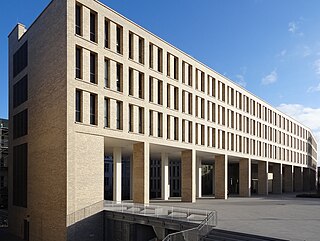
The University and State Library Darmstadt supplies literature and information for members of the Technische Universität Darmstadt and the population of Darmstadt and southern Hesse. Purposes of the institution include education, research and teaching. As of 2021, the library has a stock of 4,756,277 publications with an annual circulation of 354,200; ULB has 220,000 visitors and employs a staff of 103.66 FTE. The ULB offers at three locations learning rooms and spaces for over 1000 people. As of 2023, the City Centre library opened 24 hours per day. Director is Thomas Stäcker. ULB Darmstadt is member of the Hessisches BibliotheksInformationssystem (hebis).






